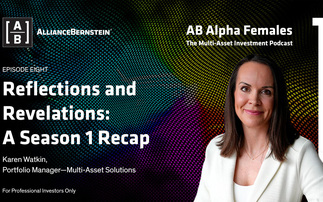In theory, fallen angels and Ba-rated bonds (the highest quality in the high yield category) should generate comparable performance. There is considerable crossover between the two segments: 90% of fallen angel bonds are currently rated Ba, and therefore by definition the Ba bucket contains a notable percentage of fallen angels. The theory gains further credence when comparing option-adjusted spreads (OAS), which are quite similar.
The similarities do not extend to performance, however.
Historically, fallen angels have delivered greater excess returns (total returns minus duration-matched Treasury returns) than both Ba-rated bonds and the broad high yield market.
While OAS are generally a decent indicator of future excess returns in higher quality credit, they tend to overestimate excess returns in high yield, as the OAS includes compensation for default risk. Paradoxically, we find that OAS tend to considerably underestimate excess returns for fallen angels. This is due to the unique structural alpha advantage these bonds enjoy relative to original issue high yield bonds.
The light blue bars in the six charts that follow show that fallen angels' total and excess returns have dramatically outpaced both Ba-rated high yield bonds as well as broad high yield bonds over the past five, ten, and 15 years.
In the first three charts below, we attempt to compare expected returns to realized returns. First, we remove the rate component (which has added return historically but may not add much value going forward in a zero-rate environment), and define expected return simply as the OAS at the start of the calculation period. The idea is that an investor purchasing a corporate bond with an OAS of 5% is expecting to earn something close to 5% per annum plus Treasury yields over the life of the bond. For a more precise analysis one would normally reduce the expected return by any loss-given-default expectations. In this simplified example, ignoring the default expectations produces a more aggressive expected return. For the 5-year point, we use the starting OAS spread. For longer periods, we take an average OAS spread lagged by five years. For example, to obtain the 10-year horizon we compare realized excess returns from September 2010 to September 2020 against the average OAS from September 2010 to September 2015.
Note here the very clear pattern that emerges: in broad high yield, the realized excess return is consistently lower than the starting OAS, which makes sense as high yield bonds do experience some defaults. In fallen angels, however, realized excess returns are paradoxically higher than the starting OAS for the five and ten years, and very similar to OAS for the 15-year period. Our research shows that this performance advantage is the result of an inefficient, inelegant transfer mechanism as fallen angel bond ownership is transferred from investment grade (IG) investors to high yield (HY) investors. The IG investors sell the fallen angels at a steep discount to fair value, to the benefit of the HY investor.
We conclude that this clearly resolves the question of whether fallen angels perform well due to their Ba-rating status, or whether Ba-rated bonds perform well as a result of including fallen angels.
Starting OAS vs Excess Returns (5-Year Lagged)1
For investors who prefer to look at total returns, in the three panels below we compare starting yields to realized total returns. Here we see a similar pattern, where fallen angels have enjoyed an even greater return advantage. It is important to note, however, that a portion of this additional total return enjoyed by fallen angels is due to the secular decline in rates, as fallen angels tend to have longer maturities than original issue high yield bonds.
Starting Yield to Worst vs Total Return (5-Year Lagged)1
These analyses show clearly that fallen angel bonds have significantly outperformed expected returns historically, not only on an absolute level but also when compared to Ba-rated high yield bonds and the broad high yield market.
Further, Ba-rated bonds benefit on the margin from the fallen angel structural alpha tailwind because fallen angels are included in the Ba universe. If we were to compare fallen angel returns to non-fallen angel Ba-rated bonds, the fallen angel return advantage would be even greater.
While there are obvious commonalities between fallen angels and Ba-rated bonds, when it comes to historical performance there is no comparison.
1 As of September 30, 2020. Source: Bloomberg. US high yield=Bloomberg® Barclays US Corporate High Yield Index, US high yield Ba=Bloomberg® Barclays US Corporate High Yield Ba Index, fallen angels=Bloomberg® Barclays Fallen Angel 3% Cap Index
Important information
For Professional Clients only. Any views and opinions are those of the author, unless otherwise noted. This is not investment research or a research recommendation for regulatory purposes.
For further information visit the BNY Mellon Investment Management website. http://www.bnymellonim.com








